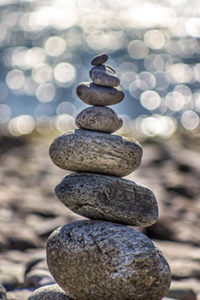 Guest post by David Bennett
Guest post by David Bennett
In these extraordinary times, with the COVID-19 pandemic bringing fear and change to every corner of the world, no-one is unaffected by what is happening around us. Whether we’re overly-immersed in a seamless supply of troubling news, struggling with the strangeness of providing online care or simply ‘working at home’, physically attending a changed and cautious workplace or worrying about the implications of easing restrictions, stress has become an ever-present aspect of our lives.
Our growing IAAH network of “people interested in promoting the welfare and healthcare of young people” (IAAH Charter, 1987), no matter how we contribute, has no choice but to push on, as there is no moratorium on the needs of young people. Rather, we are facing multi-layered complexity wherever we look.
It is a gentle truism, I believe, that individuals who have chosen to work with this age group are often imbued with innate altruism, creativity and warmth, a tendency even towards self-sacrifice. After all, our challenging role encompasses saving lives; rescuing some teens from “the cold waters of the sea of life,” while being a “secure anchor” to others; and at all times being “askable.”*
 Our field has increasingly embraced ‘mindfulness’ as part of its mission, with its compassion- and wisdom-promoting qualities directed at oneself and others. This message was sent recently to all staff at The Children’s Hospital at Westmead in Sydney: “We are conscious of the importance and value of taking a moment to pause, reflect, and reset during our day.” This insight is soundly based on research showing mindfulness to be a powerful tool for helping people cope with a variety of stress and illness, and many institutions are currently providing a range of supportive interventions and resources.
Our field has increasingly embraced ‘mindfulness’ as part of its mission, with its compassion- and wisdom-promoting qualities directed at oneself and others. This message was sent recently to all staff at The Children’s Hospital at Westmead in Sydney: “We are conscious of the importance and value of taking a moment to pause, reflect, and reset during our day.” This insight is soundly based on research showing mindfulness to be a powerful tool for helping people cope with a variety of stress and illness, and many institutions are currently providing a range of supportive interventions and resources.
A cancer diagnosis in mid-life drew me inevitably to this area of work. My grown-up children remind me still, with amusement, how their time-obsessed father would say at the time, “OMG, I’m late for meditation.” But the mindfulness training and regular practice were healing, and I remain highly respectful of its place and value, and grateful for the benefits it brings, if one sticks at it.
We are fortunate to have authoritative gurus within our field, including the brilliant young Canadian adolescent physician, Dzung Vo. In his website, Mindfulness for Teens, he outlines the basics: “…living fully in the present moment, without judgement, and with an attitude of kindness and curiosity. It’s about breathing, noticing what’s happening right here and now…” This is well and good, very good, but we too need to ‘smile and breathe’ because, if we are providers, mindfulness has been shown to improve the quality of care, the quality of caring, and the well-being of clinicians.*
COVID-19 will likely change forever how global healthcare systems and medical services function and evolve, surely including the impetus to create better and more enduring public health initiatives. With this unprecedented opportunity, IAAH seeks not only to ensure the best possible outcomes for young people, but also the longevity, health, and well-being of our special and hard-working workforce, at every level. Please be safe and take care – do not wear signs of burnout as a badge of honour.
*’Teens and their Doctors: The Story of the Development of Adolescent Medicine’ Henry Berman and Hannah Dashefsky (2016)
*’Staying present: Mindfulness in Healthcare’, (March 17, 2017)
https://postgrad.med.ubc.ca/2017/03/17/staying-present-mindfulness-in-health-care/
For additional information about kindness during the pandemic, please click, Pandemic Kindness Movement.